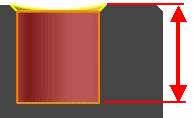When creating hole groups in PartMaker, you can extract data from a selected hole on a solid model for use in the Hole Group Parameters dialog:
Hole Group Parameters dialog — Milling
Hole Group Parameters dialog — Turning
To extract the data:
- Select the Extract Parameters from Solid option on the Hole Parameters dialog.
- On the solid model, select the portion of the hole that is the Major Diameter of the hole.
- Click Extract on the Hole Parameters dialog to extract the data.
Definitions
Recognized Hole — Several surfaces grouped together by PartMaker to make a hole on the solid. As well as recognizing a hole, PartMaker includes all cylinders that make at least a half circle.
Selected Wall Surface
— This is the surface you have selected (see
 ) on the solid model to be the Major Diameter of the hole.
) on the solid model to be the Major Diameter of the hole.
Marked Surfaces
—
PartMaker uses these surfaces (see
 ) to calculate the
Depth and
Surf values for the hole.
) to calculate the
Depth and
Surf values for the hole.
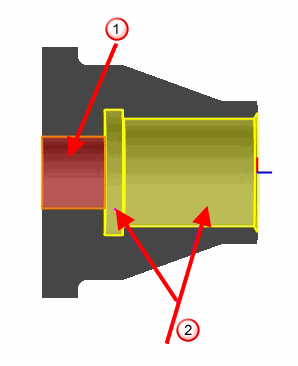
Data extracted from holes
PartMaker extracts the following data for hole groups:
Through Hole — If, further down from the Major Diameter you selected, there is a diameter that is smaller than the Major Diameter, PartMaker does not classify the hole as a through hole. For example:
- Through hole example:
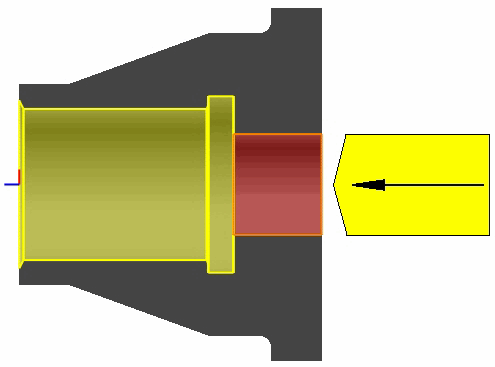
A through hole is created because there is no diameter further down the hole that is smaller than the Major Diameter.
- Blind hole example:
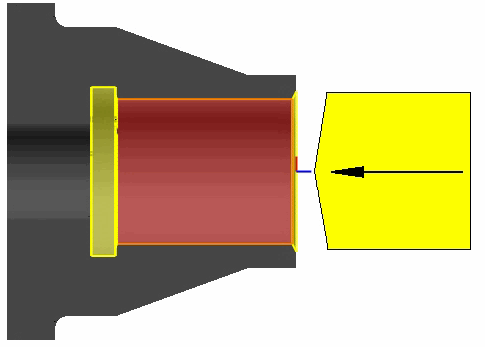
A blind hole is created because there is a diameter that is smaller than the Major Diameter. The hole stops above the hole section where the diameter becomes smaller.
Diameter — This is the larger diameter of the wall surface you selected.
Chamfer
— If the surface directly above the selected wall of the hole is a cone that reduces in diameter,
PartMaker calculates this chamfer (see
 ) for the hole group. If there is no cone, or it is not directly above the selected surface,
PartMaker sets the chamfer value to zero.
) for the hole group. If there is no cone, or it is not directly above the selected surface,
PartMaker sets the chamfer value to zero.
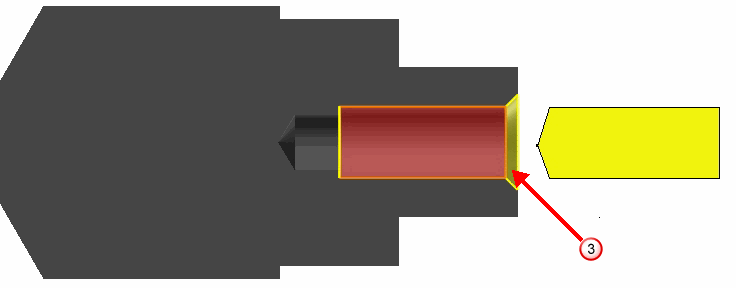
Surf
—
PartMaker finds the top of all of the selected surfaces, relative to the Face Origin, and uses this as the
Surf value (see
 ).
).
Depth
—
PartMaker finds the depth of all of the selected surfaces, relative to the top of the hole, and uses this as the
Depth
value (see
 ).
).
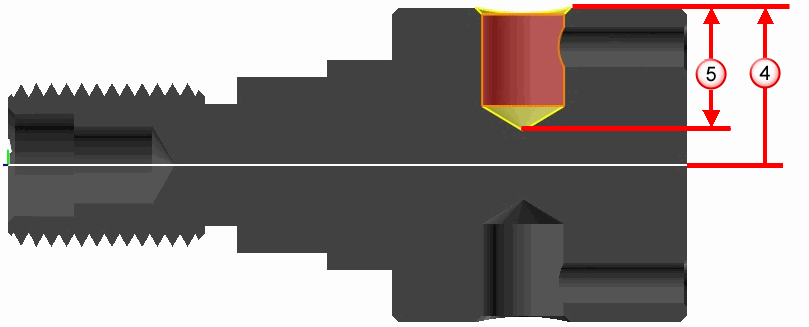
To — If PartMaker recognizes the hole as a blind hole, it uses one of the following settings:
- Shoulder of Major Tool
— Used when the bottom hole surface is a cone. The hole depth is adjusted to the top of the cone (see
 ).
).
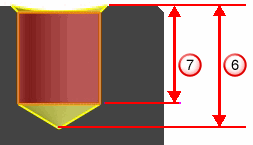
- Bottom of Major Tool
— Used when the bottom hole surface is a flat plane. The hole depth is not adjusted.
